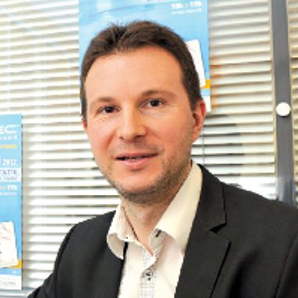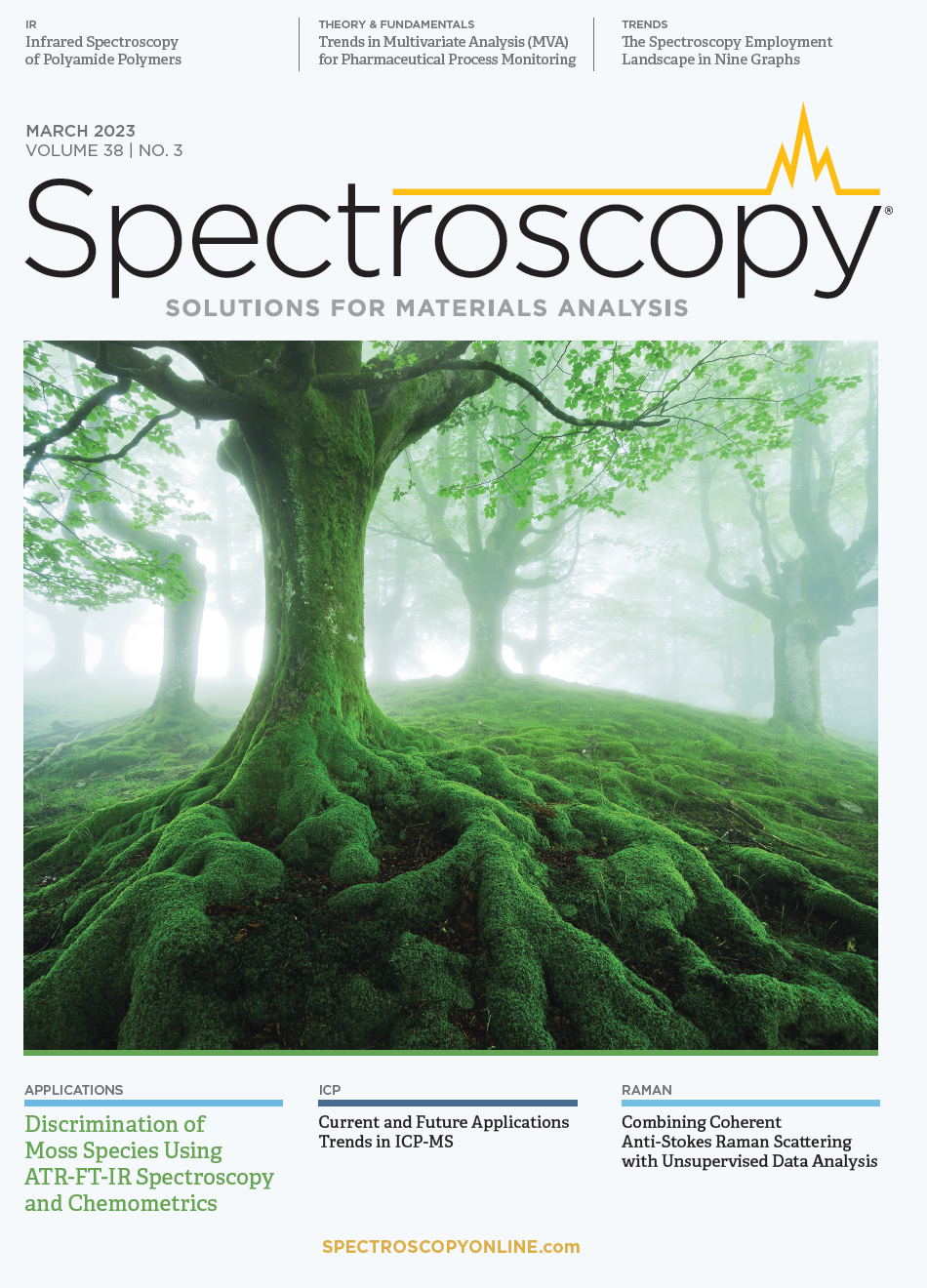Coherent Anti-Stokes Raman Scattering Cell Imaging and Segmentation with Unsupervised Data Analysis
Offering the high spectral resolution of conventional Raman spectroscopy combined with reduced acquisition time, multiplex coherent anti-Stokes Raman scattering (MCARS) microspectroscopy using sub-nanosecond laser pulses has been accepted as a mature and straightforward technology for label-free bioimaging. In a recently published paper, Philippe Leproux and associates have introduced the combination of the MCARS imaging technique with unsupervised data analysis based on multivariate curve resolution (MCR). Leproux spoke to Spectroscopy about combining the techniques, as well as discussing the potential of the results.
Your paper (1) states that coherent Raman imaging has been extensively applied to live-cell imaging in the last two decades, allowing to probe the intracellular lipid, protein, nucleic acid, and water content with a high-acquisition rate and sensitivity. What advantages does this particular technique offer compared to other label-free spectroscopic procedures?
It combines a high spatial resolution (~300 nm laterally) and a high acquisition speed, making it compatible with the observation of biological specimens like living cells or fresh tissues. This is a major asset for a chemically-selective (spectroscopic) imaging technique.
Does label-free spectroscopy produce better results for bioimaging than labeled methods, in terms of spatial resolution, and definition of composition of cells? What are the biggest advantages of label-free methods?
Confocal and multiphoton microscopy approaches are very powerful for investigating biological cells with subcellular resolution. They are supported by a mature and reliable technology, and the myriad of available fluorescent molecules allows one to collect loads of structural and functional cellular information. However, the use of labeled samples implies that those samples were somehow altered (chemically or genetically) and that the observation be restricted to “what” was labeled (for example, organelle or protein). These drawbacks disappear with label-free methods, not to mention that sample preparation is drastically simplified.
You and your co-authors introduce a new methodology for hyperspectral cell imaging and segmentation, based on a simple, unsupervised workflow without any spectrum-to-spectrum phase retrieval computation, utilizing multiplex coherent anti-Stokes Raman scattering (MCARS) microspectroscopy. Would you give our readers a basic explanation of this statement and share with us what inspired the development of this methodology?
MCARS is a microscopy technique based on spectral measurement, which is mature today (2), but generally requires a complex subsequent data processing step under the supervision of an expert. Yet it provides datasets that, in principle, should be computed by means of chemometric tools. In light of this, we focused our efforts on developing an algorithm to perform the unsupervised (“automated”) analysis of MCARS data. By combining MCARS technology with such automated data processing, we could introduce a simple method for label-free cell imaging and segmentation, that we intend to be accessible to a broad range of users, especially from the biomedical field.
What is the meaning of hyperspectral cell imaging versus basic cell imaging methods?
“Hyperspectral” means that the collected datasets contain a high number of spectral channels (one thousand, typically). Comparatively, “basic” fluorescence imaging uses one spectral channel per label or fluorophore, but spectral measurement is also possible (in this case, the word “basic” should be removed).
While, as you state, chemometric methods such as multivariate curve resolution (MCR) are widely used in spectroscopy-based data analysis, to date, MCR has never been applied to the analysis of MCARS hyperspectral datasets. What is the advantage of applying MCR, and why do you think MCR has not been applied and published before your work?
The main benefits are the unsupervised analysis, and the fact that output results are directly readable and interpretable by biologists, chemists, or physicists. Before our work, few studies reported on the use of other chemometric methods for processing CARS data in the context of cell imaging. We believe that we could successfully apply MCR owing to the quality of our datasets, including the high spectral resolution.
What was the most surprising result in your work?
Rigorously, the assumptions behind MCR should make the method non-compatible with MCARS data. Nevertheless, we could demonstrate the validity of our work from the numerical point of view, and we are currently working on the theoretical aspects. As a precaution, we consider that our approach is qualitatively valid at the moment and that further investigations would confirm quantitative imaging. Anyhow, at the very beginning of this work, we were fairly surprised by the quality of the results obtained, in terms of both spectral unmixing and chemically-selective imaging!
Were there any memorable limitations or challenges that you encountered in your work?
The study of 3D tissue samples is highly challenging because of the quantity of data to be processed. In that case, the required (random-access) memory–typically a few terabytes–can be a limitation, and subsampling strategies need to be implemented.
Another challenge was to establish and keep an interdisciplinary approach in our work within a broad team, including cell biologists, computer scientists, and physicists. This type of approach, although in the era of time, is nevertheless sometimes tricky to handle (technical language, practices, objectives, etc.).
Can you please summarize the feedback that you have received from other researchers regarding this work?
Actually, the feedback primarily came from biologists who would like to apply our method to their research field. This was expected following the scope of the journal in which we published our work (1). However, researchers from other fields, such as materials science and earth science, have also expressed their interest in our work.
What discoveries do you hope to realize using this method of cell imaging, and what do you think its impact will be in cell research and diagnostics?
We are now starting to use this label-free method to study the biological mechanisms at the interface between living cells and calcium phosphate ceramic scaffolds, in the context of bone tissue engineering. We conduct this work in the frame of Σ-LIM laboratory of excellence (3). Furthermore, we are collaborating with our Japanese partners (the research group of Prof. Hideaki Kano at Kyushu University) on the subject of label-free brain imaging, with the expectation of building a whole brain atlas with single-cell resolution (4).
What are the next steps in this research?
First, we will maintain our efforts to develop biomedical applications of MCARS technology, as illustrated above. Moreover, in terms of data processing methodology, the next step is to perform multivariate curve resolution by using deep learning approaches, given the large amount of data available and with the aim of accurately modeling the physical phenomenon of vibrational signal generation. In that respect, we are already evaluating autoencoders as candidate artificial neural networks (ANNs) for such a purpose.
References
(1) Boildieu, D.; Guerenne-Del Ben, T.; Duponchel, L.; Sol, V.; Petit, J-M.; Champion, É.; Kano, H.; Helbert, D.; Magnaudeix, A.; Leproux, P.; Carré, P. Coherent Anti-Stokes Raman Scattering Cell Imaging and Segmentation with Unsupervised Data Analysis. Front. Cell Dev. Biol. 2022, 10, 933897. DOI: 10.3389/fcell.2022.933897
(2) Kano, H.; Leproux, P. Multiplex CARS Microscopy in the « Long-Pulse » Regime : Where Are They Now? Proc. SPIE 11973, Advanced Chemical Microscopy for Life Sciences and Transactional Medicine 2022, 2022, 1197306. DOI: 10.1117/12.2609589.
(3) https://www.unilim.fr/labex_sigmalim/?lang=en
(4) Murakami, Y.; Miyazaki, S.; Boildieu, D.; Rajaofara, Z.; Helbert, D.; Magnaudeix, A. ; Carré, P.; Leproux, P.; Honjoh, S.; Kano, H. Toward Whole Brain Label-Free Molecular Imaging with Single-Cell Resolution Sing Ultra-Broadband Multiplex CARS Microspectroscopy. SPIE 11973, Advanced Chemical Microscopy for Life Sciences and Transactional Medicine 2022, 2022, PC119731B. DOI: 10.1117/12.2626342
Philippe Leproux obtained his PhD in 2001 at the University of Limoges, France, on the design of optical power amplifiers based on rare-earth doped double-clad fibers. Since 2002, he is an Associate Professor at the University of Limoges in the fields of photonics and ICTs. His research activities at XLIM Institute mainly deal with nonlinear fiber optics – especially supercontinuum generation – and biophotonics, from the design of new optical fibers to the demonstration of innovative biology-oriented experiments, like MCARS microspectroscopy. Dr. Leproux is the co-founder of LEUKOS company, Limoges, France, a spin-off from the University of Limoges and the French CNRS manufacturing supercontinuum lasers. He authored or co-authored over 240 publications/conferences and 14 patents.


Nanometer-Scale Studies Using Tip Enhanced Raman Spectroscopy
February 8th 2013Volker Deckert, the winner of the 2013 Charles Mann Award, is advancing the use of tip enhanced Raman spectroscopy (TERS) to push the lateral resolution of vibrational spectroscopy well below the Abbe limit, to achieve single-molecule sensitivity. Because the tip can be moved with sub-nanometer precision, structural information with unmatched spatial resolution can be achieved without the need of specific labels.
Tomas Hirschfeld: Prolific Research Chemist, Mentor, Inventor, and Futurist
March 19th 2025In this "Icons of Spectroscopy" column, executive editor Jerome Workman Jr. details how Tomas B. Hirschfeld has made many significant contributions to vibrational spectroscopy and has inspired and mentored many leading scientists of the past several decades.